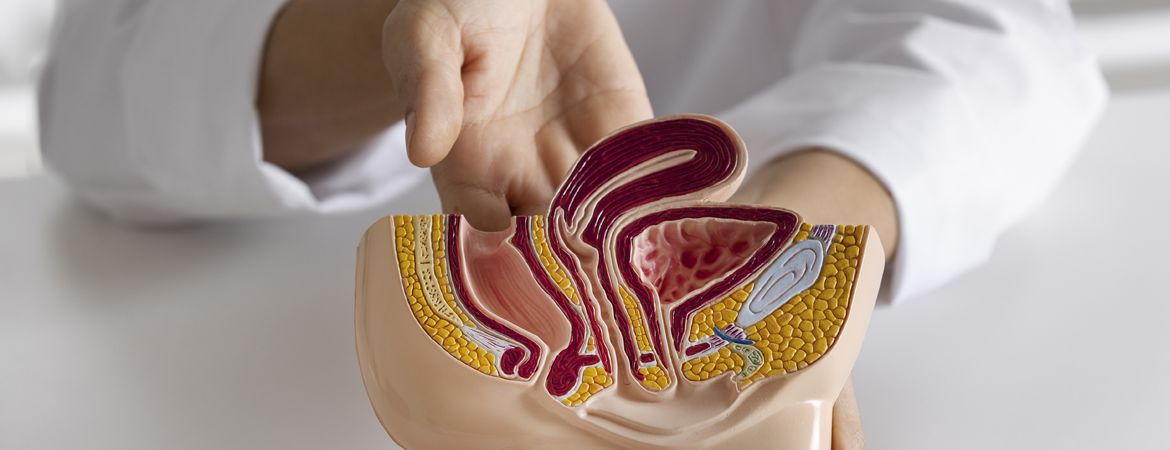
Many people have likely already heard about prostate conditions such as cancer, adenoma, and inflammation. But before diving into the details, it’s important to first understand the definition and function of the prostate. Let’s take a closer look.
What is the prostate?
The prostate is a gland found in the male reproductive system. More specifically, it is located around the urethra and beneath the bladder. This gland develops and becomes active during puberty under the influence of testosterone.
The Prostate: What is its role?
The prostate has several functions. Firstly, it contributes to the production of semen. Indeed, it produces the seminal fluid that makes up semen. Note that prostatic secretions only represent 20% of seminal fluid. The rest of this fluid is produced by the seminal vesicles.
However, prostatic secretions play a major role in the survival of sperm, their resistance to acidity in the vagina, and their motility.
On the other hand, the prostate closes off the urethra during ejaculation. As a result, there is no risk of urine and semen mixing. It is the smooth muscle fibres in the prostate that prevent urine from flowing back into the seminal vesicles.
The final role of this gland is hormonal. It transforms part of the testosterone into dihydrotestosterone. This is an even more active metabolite. Therefore, note that this gland has no role in erection or continence.

There are three major prostate problems. A man can suffer from an infection, benign enlargement, and cancer.
The infection is acute prostatitis.
Acute prostatitis is a bacterial infection of the prostate that causes symptoms such as pain and fever.
Acute prostatitis can be caused by bacteria or viruses, but most often by bacteria. This condition is rare in children and adolescents and more common in men over 65.
Symptoms of acute prostatitis include:
- Painful urination
- Fever and chills
- Cloudy urine
- Blood in the urine
Benign prostatic hyperplasia (BPH), on the other hand, is caused by an increase in the size of the prostate. This can be bothersome, which is why the condition requires management by a doctor.
Symptoms of BPH include:
- difficulty starting to urinate (hesitancy)
- straining to urinate (dysuria)
- a weak stream of urine or one that starts and stops
- feeling that the bladder has not emptied completely
Prostate cancer is the most common type of cancer affecting men. Serious, it only causes symptoms when it is in an advanced stage. This disease is often caused by age, family history, ethnic origin, or the individual’s weight and height.
Prostate cancer can be treated with surgery, radiotherapy, or hormone therapy. If it has not spread outside the prostate, early-stage prostate cancer rarely causes signs or symptoms.
Medical treatment for prostate cancer may, in some cases, involve the removal of the prostate. This surgical procedure is called a radical prostatectomy.
A radical prostatectomy involves making an incision in the lower abdomen and removing the entire prostate, less than an inch (2.5 centimetres) of the urethra, and part of the seminal vesicles surrounding the prostate.
Radical prostatectomy can be performed using one of two techniques: open or laparoscopic.
During an open radical prostatectomy, a large incision is made in the lower abdomen to expose the pelvic organs. The surgeon makes another incision in the rectum and inserts a special viewing instrument called a laparoscope into the abdominal cavity. The surgeon also uses other surgical instruments to remove the prostate through this incision in the rectum.
In a laparoscopic radical prostatectomy, several small incisions are made around the navel, but no incision is made in the navel itself. A narrow tube with a lens at one end (a laparoscope) is inserted into one of these tiny openings so the surgeon can see inside your abdomen while removing your prostate.
There are several ways to examine the prostate, including digital rectal examination (DRE), transrectal ultrasound (TRUS), and magnetic resonance imaging (MRI).
Digital Rectal Examination (DRE)
A digital rectal examination involves inserting a lubricated finger into the rectum to check for any abnormalities, such as lumps or bumps. DRE is often used to diagnose prostate cancer, as many cancers develop within the prostate gland. However, DRE cannot detect all lumps in men with prostate cancer.
Transrectal Ultrasound (TRUS)
Transrectal ultrasound is a test that uses ultrasound waves transmitted through the wall of the rectum to create an image of the prostate. It can reveal abnormalities inside the gland and help determine if they need further investigation. This test can be carried out in your GP’s surgery or at the hospital if your doctor suspects an enlarged prostate or if you have symptoms of lower urinary tract infection or other urination problems. The doctor will insert a gel-coated probe into your rectum to view the inside of it on a screen connected to a special device called an ultrasound machine. You will not feel anything during this procedure.
How do you know if you’re having prostate problems? Here are the symptoms you should look out for. First, you may feel the need to urinate frequently. You may also find that you are unable to urinate at all or that you have a weak stream. You may also experience pain or a burning sensation when you wee.
There are several treatments for prostate diseases. Depending on the symptoms and the condition, treatment may involve antibiotics, surgery, embolisation, alpha-blocker medication, and others.
In all cases, you should consult a doctor to undergo treatment. If you are looking for a specialist in Tunisia, you can contact La Clinique Méditerranéenne.
A prostatectomy is a surgical procedure to remove the prostate gland. The prostate is an organ that produces fluid containing sperm and other substances. Prostate cancer can develop in the prostate gland, but surgery is rarely used as the main treatment for this disease.
The main reason for a prostatectomy is to treat a condition called benign prostatic hyperplasia (BPH). BPH causes an enlarged prostate gland, which can lead to urinary problems such as difficulty urinating or a weak urine stream, particularly with age.
A prostatectomy may also be performed as part of a treatment plan for prostate cancer. This type of surgery is done when the cancer has spread beyond the gland and needs to be removed, along with any surrounding tissue that may contain cancer cells.

